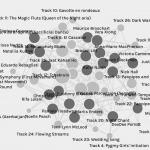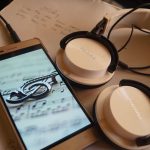Task:
- Using only emojis available in your texting app (either mobile or desktop), write the title and describe the plot of the last movie, TV or book show that you watched or read. Important note: Do not write anything orthographically.
- Create a post in your own blog space with the task. You can use tools such as https://emojikeyboard.io (Links to an external site.) if it’s easier for you.
- Without giving away the title of the movie, TV show or book, reflect on the process and challenges that you encountered in translating the title and plot the chosen work into emojis. The following questions can lead your reflection:
- Did you rely more on syllables, words, ideas or a combination of all of them?
- Did you start with the title? Why? Why not?
- Did you choose the work based on how easy would it be to visualize?
- Explore your colleagues’ entries and see if you can translate their titles and synopses.


“… we are living in a visual culture… We are bombarded with pictures from morning till night…” (Bolter, 2001, p. 47).
- Did you rely more on syllables, words, ideas or a combination of all of them?
To write this emoji story, I have relied mostly on the main characters, the plotline, and the general ideas of the movie I have watched over the weekend. It has been easier to do it this way because breaking it down into every single word would be time-consuming and challenging due to the limited number of emojis available on my smartphone.
- Did you start with the title? Why? Why not?
I did start with the title which had probably been the most challenging part of writing the emoji story. The title of the movie is very generic and the plotline does not give out many hints or clues. If you do not know the movie, you will most likely have to guess the title. I have started with the title because I like doing challenging tasks first before moving on to more easy ones. I knew that once I tackle the title, the rest would be easy to complete. I also agree with the following statement “Picture writing is perhaps constructed culturally (even today) as closer to the reader, because it does not depend upon the intermediary of spoken language and seems to reproduce places and events directly.” (Bolter, 2011, p. 59). Furthermore, picture writing does have a promise of immediacy and in this instance, conveys a lot of scenes from the movie with just a couple of emojis (Bolter, 2011).
- Did you choose the work based on how easy would it be to visualize?
This has been the movie I have watched over the weekend and I thought I would follow the requirements of the task and truly pick the most recent movie I have watched. I enjoyed this movie quite a lot and the tasks in this course are always interesting and exciting, so having an opportunity to work on something I truly enjoy has been a pleasure and brought me a lot of joy. I hope my students will feel the same when I teach them to write emoji stories. It will be a hit, I am sure!
Rebus Books
In chapter 4, Bolter (2001) talks about rebus books in which “nouns are replaced by stylized drawings” (p. 54). As a child, I used to play rebus games and even come up with our owns as part of our homework. It was such an engaging and fun activity that is somewhat similar to the emoji story. Bolter (2001) also explains the educational purpose of this activity: “A young child can follow the story and become accustomed to the linearity of reading before he can actually decipher the letters that constitute alphabetic writing.)” (p. 54). In my opinion, this fun activity can help foster a love for reading in young learners and I will add it to my list of activities to try with my primary students.
References:
Chapter 4. Bolter, J. D. (2001). Writing space: Computers, hypertext, and the remediation of print (2nd ed.). Mahwah, N.J: Lawrence Erlbaum Associates. doi:10.4324/9781410600110





grace reid
October 24, 2021 — 7:59 pm
I need what this is! I loved it! You did a wonderful job of capturing the layers and streamlining the complexities of a script. I realize after looking at a few how important the segmenting and organizing of ideas is. The positioning of emojis allowed for a more concise and coherent script.